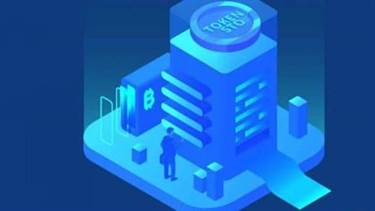Content
The latest version of HTML is called HTML5 and was published on October 28, 2014 by the W3C recommendation. This version contains new and efficient ways of handling elements such as video and audio files. This is an excellent free course from Coursera not just to learn Front-end development but also programming fundamentals using JavaScript, HTML, and CSS. If you’ve never experienced client-side web development, learning the plethora of front-end technologies can be difficult, but with proper guidance and choosing the right courses, you can achieve your target. Frontend development is one of the critical skills for web developers as there is a lot of demand for programmers with excellent front-end development skills. These are the best online courses to learn Frontend Development in 2022 from Udemy, Pluralsight, Educative, and Coursera and are good for beginners.

Note that there’s a trend these days where the line between the front end and back end development has been blurring. Primarily since many of the tasks that fall in the domain of back end developers are being increasingly handled by the front end developers. Without further ado, before getting started with how to become a front-end developer let us first undersatnd what is a front end developer. Knowing the frameworks and libraries will make you more attractive in the job market.
JavaScript Frameworks
With continuing development for mobile devices, such as smart phones and tablets, designers need to ensure that their site comes up correctly in browsers on all devices. This can be done by creating a responsive web design using stylesheets in CSS. If you like these best frontend development courses and tutorials, then please share it with your friends and colleagues. If you have any questions or feedback, then please drop a note. That’s all about some of the best online training courses and certifications to become a front-end developer.
- These frameworks and libraries allow you to save time and do more with less code.
- JavaScript lets you add a ton more functionality to your websites, and you can create a lot of basic web applications using nothing more than HTML, CSS, and JavaScript .
- Even though we are living in the era of frameworks and libraries, but knowledge of these fundamental technologies cannot be undermined.
- Check out the syllabus above to see everything the Career Path has to offer.
In this module, you’ll meet your teachers, learn how Scrimba works, and build your first web app. InstructorRichard is a Course Developer with a passion for teaching. He has a degree in computer science, and first worked for a nonprofit doing everything from front end web development, to backend programming, to database and server management. InstructorAlyssa is a full stack developer who was previously the lead instructor at a coding bootcamp. With a degree in International Communications, her passion is to express thoughts well, whether in code or writing. With real-world projects and immersive content built in partnership with top-tier companies, you’ll master the tech skills companies want.
Top student reviews
Same as above, research job postings in your area to see what libraries and frameworks are being used. CSS preprocessors like Sass and Less, allow you to add logic and functionality to your CSS. There are dozens of options on the market and you don’t need to learn them all. It’s often helpful to look at jobs in your area and see what technologies they’re using.
It is the only course you need to learn web development — HTML, CSS, JavaScript, Node, and much more. It does not just focus on front-end development but also on the backend and other aspects of web development. Throughout the path, you’ll build more than a dozen projects, and solve more than 100 interactive coding challenges. It’s fully self-paced, and you can choose whether you’d like to do it part-time or full-time. This career path will turn you into a hireable frontend developer as fast as possible. By the end of it, you will have learned enough HTML, CSS, JavaScript, and React to get your first job as a frontend web developer. All modules are filled with interactive coding challenges to ensure that you don’t fall off the wagon.
Creating Maintaining Mobile and Responsive Design
All you need is a computer that can run modern web browsers, an internet connection, and a willingness to learn. Here we provide you with a structured course that will teach you all you need to know to become a front-end web developer. Work through each section, learning new skills as you go along.
Can I become a full stack developer in 6 months?
As mentioned earlier, three or six months is enough time for beginners to take hands-on courses or boot camps. However, a yearlong timetable can give aspiring full stack developers the bandwidth to supplement their education through other avenues.
Although we have set up the Career Path to allow you to go from zero knowledge to hireable developer, you don’t have to follow the course in order we have given. You might choose to skip ahead to modules you need to know about more urgently, or go back and redo parts from time to time. In this module, you’ll learn to use it, and build several different projects. This module teaches you how to make your websites work well on all screen sizes, a critical skill for any frontend developer. Develop an understanding of how to use build tools, such as Webpack, for automating build tasks. Create CSS variables with Sass and configure Webpack to use Sass controlled stylesheets.
Exercises and Quizzes
However, some people are able to pick up coding concepts a little bit quicker than others. The key to balancing it is to set aside some time each day to learn. The most important thing is to have fun with it and not rush yourself. If you enjoy the learning process, you will be in a much better space to learn it quicker than most.
By the way, you would need a Pluralsight membership to join this course which costs around $29 per month or $299 per year (14% discount). I highly recommend this subscription to all programmers as it provides instant access to more than 7000+ online courses to learn any tech skill. Alternatively, you can also use their 10-day-free-pass to watch this course for FREE. For the beginner, starting to learn front-end development can be daunting, and that’s where this course helps. It will teach you the basics of all of the different aspects of front-end web development, and how to hone and keep your skills up to date. To start learning JavaScript, you can take freeCodeCamp’s JavaScript Algorithms and Data Structures course.
There are several tools and platforms, such as WordPress, Joomla, and Drupal, available that can be used to develop the front end of a website. Front-end web development is the development of the graphical user interface of a website, through the use of HTML, CSS, and JavaScript, so that users can view and interact with that website. That will also help in the long run with debugging, troubleshooting, and dealing with performance issues with real-world web applications. The course also touches on various aspects of Redux and uses it to develop React-Redux powered applications. You will then also learn how to use Fetch for client-server communication and the use of REST API on the server-side.
- Responsive design is essential in creating websites that look good on all devices.
- The next step is to learn CSS, to set the layout of your web page with beautiful colors, fonts, and much more.
- If you don’t know, Educative is a new online learning portal that provides text-based interactive learning material.
- Prior to publishing the code on your website, CSS preprocessors transition it into well-formatted CSS that works across a variety of browsers, the most in-demand being LESS and SASS.
The next step is to learn CSS, to set the layout of your web page with beautiful colors, fonts, and much more. HTML, CSS, and JavaScript are the basic languages you need to know to create a website. A Front-End Developer is someone who creates websites and web applications. Performance goals are chiefly concerned with render time, manipulating the HTML, CSS, and JavaScript to ensure that the site opens up quickly. Cascading Style Sheets controls the presentation aspect of the site and allows your site to have its own unique look. It does this by maintaining style sheets that sit on top of other style rules and are triggered based on other inputs, such as device screen size and resolution. The CSS can be added externally, internally, or embedded in the HTML tags.
If you are not sure if front-end web development is for you, and/or you want a gentle introduction before starting a longer and more complete course, work through our Getting started with the web module first. While some may be devoting their full time to learning new coding skills, some may be learning it during the little time they have between work and other life commitments.












